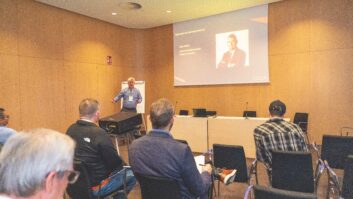How can we ensure home networks will perform adequately in the future? Ian Trudgeon of thinkingbricks looks at CAT5e, CAT6 and when to take the plunge on fibre optics.
With the telecommunications companies focusing on the speed of broadband and increasing the variety and sizes of downloadable content available on the internet, it seems everyone has to consider that what works perfectly today may well struggle tomorrow.
Clients will want their investment in a network to deliver value for years to come. It’s all about bandwidth or the capability available within the cable to transmit information .
Today’s data speeds…and the future
The fastest “real” broadband download speed available over existing copper cabling is around 9 megabits, with the majority of copper based providers offering 3-5 meg as a standard service.
There are already providers looking to double the download speeds possible. Other countries, such as Japan and Sweden, are already offering broadband in the 40+ meg arena. All this is driven by the producers of online content and the internet service providers who want robust high quality connections to deliver more services – for example high definition films on demand.
What can current cabling standards deliver?
Take a standard CAT5e cable (pictured), with eight copper cores, in four “twisted pairs” to reduce interference along the length of the cable. Using copper to make the connections, these networks can deliver speeds of up to 1000 meg (1 Gigabit) ethernet within the home.
With these speeds, a CAT5e network can cope with large “packets” of information (audio files, data files, video clips) sent across the home, to and from devices such as PCs, media servers and video screens.
If the client is working from home, or is going to be a heavy future user (ie using the network to stream audio and video to a number of points), it may be worth the investment for a CAT6 infrastructure.
Video distribution systems can benefit from using CAT6 cabling and terminations for high definition transmission around the network.
CAT6 cabling does require specialist installation, as well as CAT6 specific terminations and hub equipment. Broadly speaking, CAT6 networks are more expensive than CAT5e networks for equivalent size systems.
So what’s next?
Fibre optic cabling has been used for many years in the telecommunications industry to provide ultra high bandwidth telephone and data networks. Theoretically, fibre optic cabling provides infinite bandwidth in a network – with information travelling at the speed of light.
As with any technology, the commercial standards are starting to filter down, and there are now emerging options available to provide fibre optic networks for the home.
Currently, there are a number of connections possible to send data, audio and video using fibre. However, the costs are comparatively high in comparison with conventional CAT5e copper cabling, and fibre optic networks require specialist skills and tools to terminate the cabling.
Many advocates of fibre optic networks have cost models which show that once bandwidth above today’s standards is required, there is little to choose between CAT6 and fibre. However, fibre has yet to provide a widely accepted viable alternative to copper in the residential environment.
The cost of retrofitting these networks means that they are usually targeted at new build properties. Here there is the ability to put conduits in place for a future upgrade, even if fibre cabling is not installed at first fix.
The keys to anticipating the requirements for a network are:
• The speed and requirements of any incoming service
• The workload of the network within the property
• The investment necessary and client’s priority to ensure absolute future proofing.
Ian Trudgeon is project director with thinkingbricks. He is offering RIBA-certified CPD courses on all aspects of home technology.







